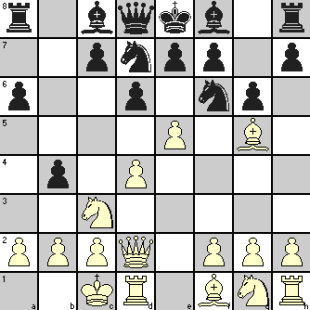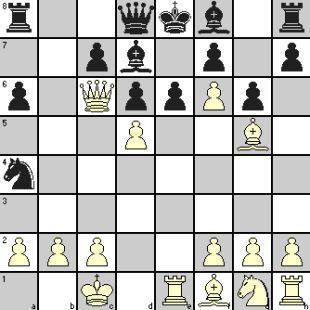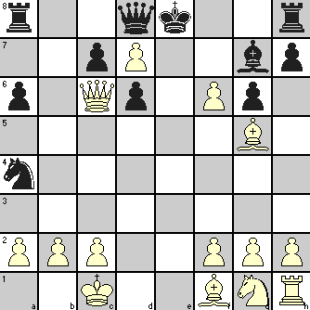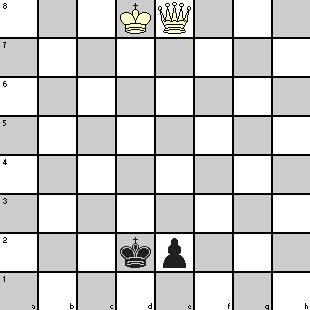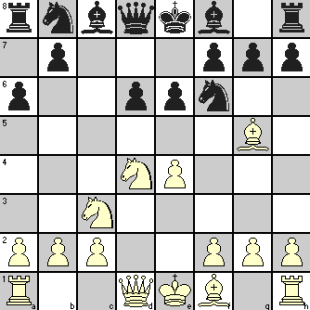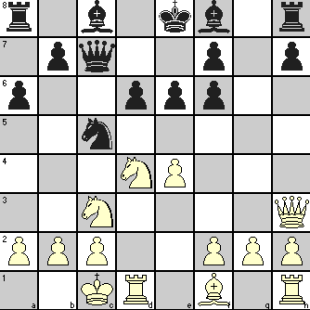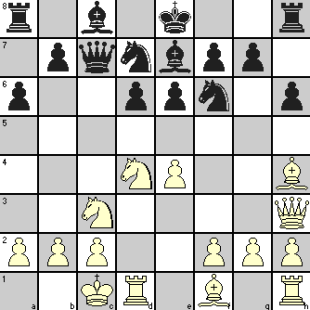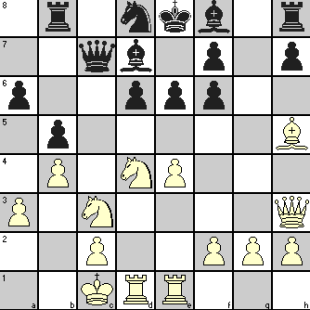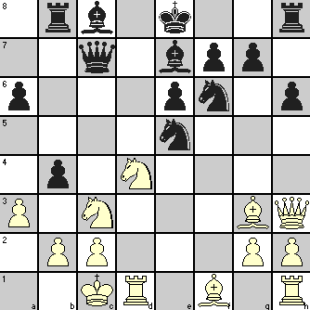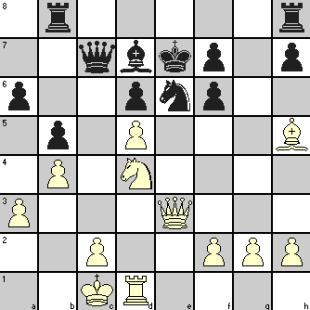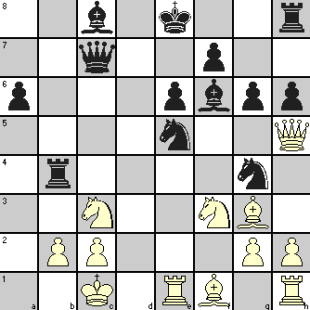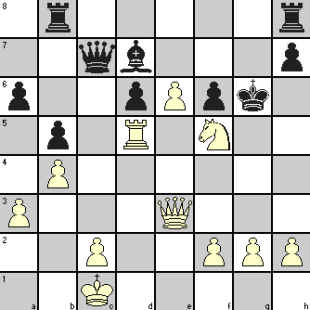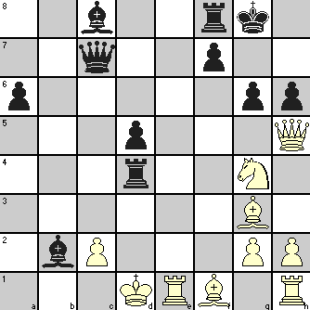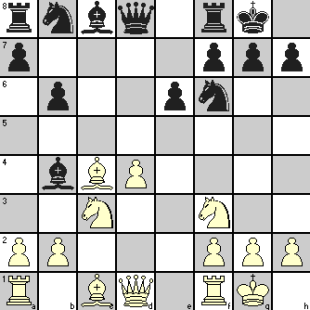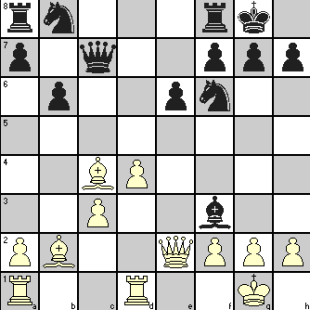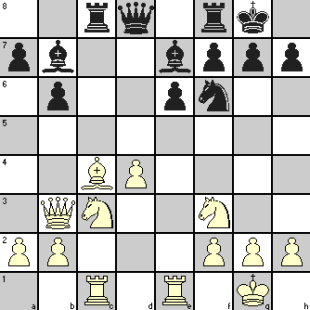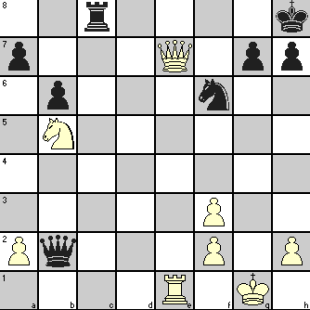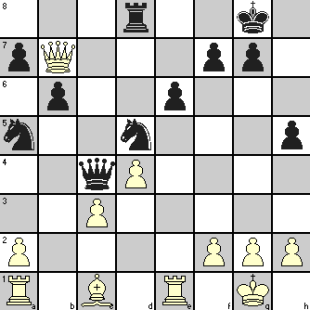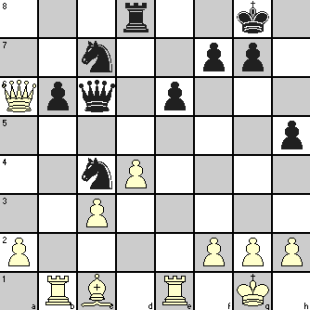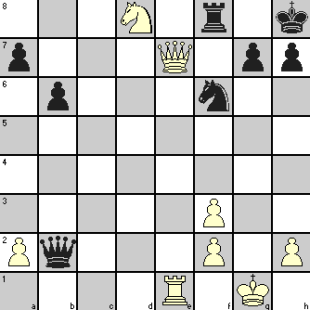A vivid example on importance of center control in chess showed you the importance of this aspect of chess openings. At the risk of overstressing the point, here we bring another short game played with Sicilian Defense which is supposed to give Black a good fighting chance against White’s King Pawn opening.
We have already discussed about the theory behind one variation of Sicilian opening in Chess Opening: Control of Center – Part 1 and showed examples in Chess Opening: Sicilian Defense Theory to Practice about the kind of play that can win for White or Black.
Sicilian Defense is the choice of combative players because Black is playing to create advantage, not just to achieve equality. At the same time, Black must realize that by not directly going for the control of center, he may be allowing White an early initiative. Therefore Black has to play carefully so as not to be swept off his feet by a quick attack before his own thrusts have taken effect.
Just adopting Sicilian Defense without this realization is not going to help Black to get the upper hand. He must be prepared to play aggressively but precisely in line with the theories to snatch the initiative, otherwise it could be a recipe for swift demise! That is what happened in the following game played at Bad Gastein in 1948 and we try to identify where Black went wrong and allowed White his brilliant attack.
| Nicolas Rossolimo |
Ivan Romanenko |
||||
| 1. | e4 | Aims to control d5 and f5 and create space for King side initiative |
|||
| 1. | … | c5 | |
||
| Shows black’s intention to go for Sicilian Defense. This move apparently violates the principle of controlling the central and semi-central squares as it applies pressure only to d4. Unlike moves like …e5 or …Nc6 which challenge center control or develop minor pieces, …c5 does neither. It also needs some more pawn movements like …d6, …e6, …a6 etc., allowing White a lead in development with attacking chances. Then why go for it? On the positive side, it gives Black
|
|||||
| 2. | Nf3 | Nc6 | Moves and countermoves to wrest control of d4 and e5 squares |
||
| 3. | Bb5 | |
|||
| To quote Al Horowitz, this move was ‘actually an idea of Nimzowitsch, who called it one of his little jokes in the opening’. It was Rossolimo who adopted it many times to achieve remarkable success (as in the present game). That is how this line of Sicilian Defense goes under the name of Nimzowitsch-Rossolimo attack (ECO code: B31) The main purpose is to get a rapid development and a strong center with c3 and d4. The struggle for d4 dictates the tactics for both sides and Black must be ready to capture on d4, else White gets great lead in development. |
|||||
| 3. | … | g6 | Black is getting ready to develop his KB to g7 and to apply pressure on d4 and e5 squares. White’s usual intention is to play Bxc6, giving Black doubled pawns. Black’s major responses are 3…g6 preparing …Bg7, 3…d6 preparing …Bd7, and 3…e6 preparing 4…Nge7. |
||
| 4. | 0-0 | Bg7 | White safeguards his King and wants to use KR as part of his attacking plans. Black of course carries on with his development plans. |
||
Position after 4 moves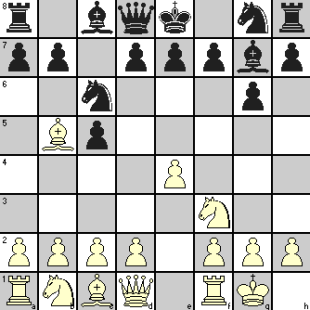 |
|||||
| 5. | Re1 | Normal continuation is 5. c3 Qb6 with a struggle for control of d4. The text move was introduced by Gurgenidze for expected line of play along 5. Re1 e5 6. b4 |
|||
| 5. | … | Nf6 | This changes track from control of d4 to attacking e4 pawn and exposed the Knight to an early attack. |
||
| 6. | Nc3 | White develops his Knight to support his QP as also his KB and adds to the control of d5 |
|||
| 6. | … | Nd4 | |
||
| In keeping with the strategy discussed against move 3, Black should have gone for 6. … e5 followed later by …Qb6. Other alternatives would be 6 … d6 to enable …Bd7 or to safeguard his King (because of the distant and not so distant pins by White’s Bishop and Rook) by …0-0. The text move was not consistent with any of these ideas and hence a questionable move. |
|||||
| 7. | e5 | Ng8 | Black’s inhibited play and inconsistencies allow White considerable space in center with tempo through attacks on enemy pieces. |
||
| 8. | d3 | Nxb5 | See how Black is surrendering all initiative to White. While White opens lines for his QB, Black’s QB is still locked in and his King’s Knight has retreated and blocked castling for his King. His center pawns remain immobile. The exchange of Knight and Bishop was originally the intention of White’s 3rd move to reduce Black’s control on d4 and e5. Without being forced, Black Knight has taken the trouble of wasting several moves to give White what he wanted! |
||
| 9. | Nxb5 | a6 | Another questionable move by Black. As subsequent moves show, White’s QN was headed for d6 square, Black’s move just assisted it in taking that step! One of the basic tenets in chess is that you should not force a badly placed enemy piece to move to a better square. By extension of the logic, do not induce your opponent to take a move that he was ready to take. Both these lose tempo for you as you could use that time to make more profitable moves for your own pieces. |
||
Position after 9 moves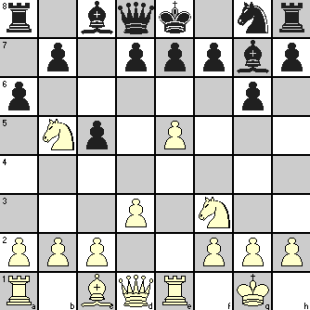 |
|||||
| 10. | Nd6+! | exd6? | White knew that the capture of his Knight would give him a fierce attacking opportunity and so his move was an excellent idea. But Black still fell for it, making a bad situation really worse by exposing his King to the possibility of a discovered check. After this, White’s attack through a brilliant combination simply rolls on. |
||
| 11. | Bg5! | |
|||
| White has timed his moves to perfection! He held back the discovered check to first drive away the Queen which could come to some help against what White planned. With an immediate discovered check, Black would be able to extricate himself with Ne7. There is a couple of important lessons here. Firstly, you can sometimes get out of a difficult situation by returning the material that was sacrificed by your opponent to gain an attack. By doing this, you are still even on material, but the opponent’s attack may fizzle out. Trying to hold on to the material only adds to your difficulties. Secondly, you need not be in a hurry to execute a move which is there for the taking when you can make some other move that compels your opponent to attend to it first. All good players know this maxim of looking for a better move when a good move has been found. The text move by White takes care of both these possibilities. |
|||||
| 11. | … | Qa5 | 11. … Qb6 would not be any better. |
||
| 12. | exd6+ | Kf8 | |
||
| At this stage, White’s win was only a matter of time and most players would possibly go for the simple 13. Qe2 with one likely line as: 13. Qe2 Bf6 14. Qe8+ Kg7 15. Ne5 (threatening 16. Qxf7#) Bxg5 16. Qxf7+ Kh6 17. Qf8+ Kh5 18. g4+ Kh4 19. Qf3 (threatening 20. Qg3#) Bf4 20.Qxf4 Nf6 (or Qb4) 21. Nf3+ Kh3 22. Qg3# But White found a more elegant line. |
|||||
Position after 12 moves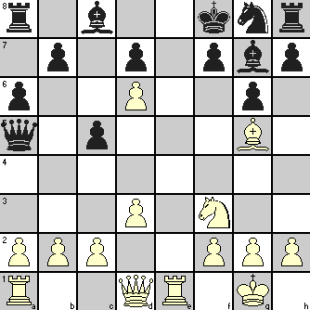 |
|||||
| 13. | Re8+! | Kxe8 | |||
| 14. | Qe2+ | Kf8 | |||
| 15. | Be7+ | Ke8 | 15. … Nxe7 16. Qxe7+ Kg8 17. Ng5 with Qf7# to follow |
||
Position after 15 moves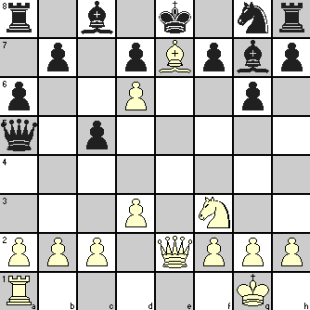 |
|||||
| 16. | Bd8+! | Kxd8 | |||
| 17. | Ng5 | Resigns | It is either 18. Nf7# or 17. … Nh6 18. Qe7# |
||
The final position: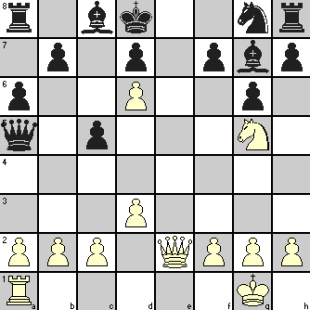 |
|||||
